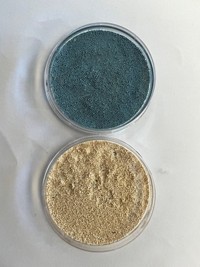Advertisement
Grab your lab coat. Let's get started
Welcome!
Welcome!
Create an account below to get 6 C&EN articles per month, receive newsletters and more - all free.
It seems this is your first time logging in online. Please enter the following information to continue.
As an ACS member you automatically get access to this site. All we need is few more details to create your reading experience.
Not you? Sign in with a different account.
Not you? Sign in with a different account.
ERROR 1
ERROR 1
ERROR 2
ERROR 2
ERROR 2
ERROR 2
ERROR 2
Password and Confirm password must match.
If you have an ACS member number, please enter it here so we can link this account to your membership. (optional)
ERROR 2
ACS values your privacy. By submitting your information, you are gaining access to C&EN and subscribing to our weekly newsletter. We use the information you provide to make your reading experience better, and we will never sell your data to third party members.
Greenhouse Gases
XPrize Carbon Removal selects 15 milestone winners
Each team will get $1 million of Elon Musk’s money to develop their carbon removal concept
by Craig Bettenhausen
April 27, 2022
| A version of this story appeared in
Volume 100, Issue 15

As Elon Musk was busy buying Twitter, the XPrize Foundation announced the 15 teams that will each take $1 million of his fortune and use it to develop their concepts to remove large quantities of carbon dioxide from Earth’s atmosphere. Musk’s personal foundation has pledged to donate a total of $100 million in prize money.
The start-up Calcite Carbon Removal, for example, won for a direct air capture (DAC) technology that cycles between calcium hydroxide, Ca(OH)2, and calcium carbonate, CaCO3, to pull CO2 out of the air and isolate it for transport and sequestration.
Another DAC-based winner, Verdox, is an early mover in electrochemical carbon capture, a promising but unproven route that avoids solvents and heat, two big cost drivers in many DAC systems. Verdox’s electrodes switch between CO2 absorbing and releasing modes with a change in applied voltage. The firm will sequester its carbon with Carbfix, a CO2 mineralization company that is also working with another milestone winner, Heirloom, and the DAC industry leader Climeworks.
An approach that’s been gaining attention recently is DAC’s aquatic cousin, direct ocean carbon capture. The California Institute of Technology spin-off Captura got its $1 million for a system that uses membranes, silver and copper electrocatalysts, and a potassium ferrocyanide/ferricyanide electrolyte to convert CO2 dissolved in seawater into carbon monoxide, ethylene, and small alcohols. Captura plans to build a floating prototype powered by renewable energy.
The foundation gave away $5 million across 23 student-led teams in November. The $50 million grand prize and $30 million runner-up pool are still up for grabs, and XPrize officials say any project could win, even if it wasn’t among the awardees so far.
$1 million each
XPrize’s 15 milestone-winning projects ply their carbon-removal methods on land, air, sea, and rock.
Air
▸ Calcite Carbon Removal: Calcium mineral cycle
▸ Carbyon: Temperature swing membranes
▸ Heirloom: Mineral sorbent cycle with subsurface mineralization
▸ Sustaera: Mineral sorbent cycle
▸ Verdox: Electrochemical scrubbing with subsurface mineralization
Land
▸ Bioeconomy Institute: Biochar soil amendment and bio-oil chemical feedstock
▸ Global Algae Innovations: Reforestation and algae agriculture
▸ NetZero: Biochar soil amendment and biomass power generation
▸ PlantVillage: AI-powered regenerative agriculture
▸ Takachar & Safi Organics: Biochar soil amendment
Ocean
▸ Captura: CO2 capture using electrolysis and separation membranes
▸ Marine Permaculture SeaForestation: Seaweed for soil amendment and seafloor long-term storage
▸ Planetary: Ocean alkalinization using upgraded mine waste
Rocks
▸ Carbin Minerals: Carbon mineralization using waste from mines
▸ Project Hajar: Electrochemical capture with peridotite mineralization.



Join the conversation
Contact the reporter
Submit a Letter to the Editor for publication
Engage with us on Twitter